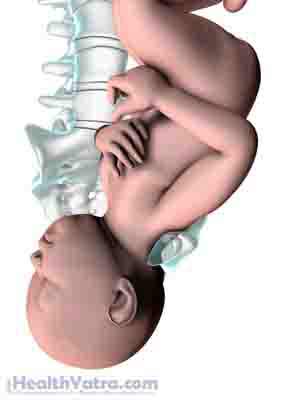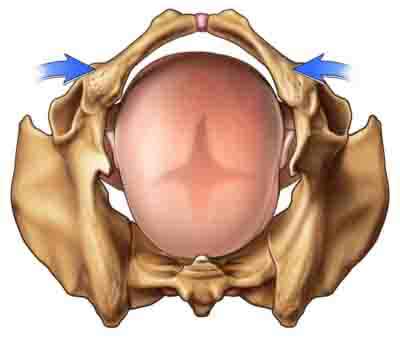परिभाषा
Dystocia is a term used to describe the difficult delivery of a baby. In shoulder dystocia, the baby’s head can be delivered, but the shoulders cannot pass through the birth canal. The shoulders are too wide to fit and become lodged behind the mother’s pubic bone or the opening of the birth canal.
Typically, babies born with shoulder dystocia do not suffer long-term complications. If complications do occur, they are usually because the baby has become stuck too long in the birth canal.
Complications include:
- For the baby:
- Lack of oxygen
- Broken arm or collarbone
- Arm nerve damage
- पक्षाघात
- For the mother:
- Tearing or bruising of the cervix, rectum, or vagina
- Bruising to the bladder
- Hemorrhaging

का कारण बनता है
There are a variety of reasons why a baby’s shoulders may become lodged during delivery. The most common reasons include:
- Delivering very large babies with unusually high birth weights
- Often caused by diabetes or mothers who are very overweight
- Mother’s pelvic opening being too small to allow the baby’s shoulders to fit

जोखिम कारक
The following factors increase the chance of a baby suffering from shoulder dystocia:
- Mothers who are diabetic
- Mothers who are significantly overweight
- Mothers, often small themselves, who may have a small pelvic structure
संकेत और लक्षण
The signs of shoulder dystocia are noticeable when the baby’s head is delivered. The delivery does not progress because of the baby’s shoulders being lodged in the birth canal behind the pubic bone. Signs also include very large babies who are likely to have problems being delivered vaginally.
निदान
Shoulder dystocia cannot be diagnosed until delivery. It can sometimes be predicted by determining the weight and size of the fetus and whether a vaginal delivery is safe for the mother and baby. An ultrasound may be done prior to labor to determine if the baby is too large to fit safely through the birth canal during delivery.
उपचार
Your doctor will decide on the best treatment plan for you. Treatment options include:
- Manipulated vaginal delivery —There are a variety of maneuvers that the doctor can do to help the mother deliver the baby.
- Cesarean delivery (if the maneuvers do not work, the baby will need to be delivered via a C-section. For babies who are at risk of shoulder dystocia because of their large size, a सी-धारा may be scheduled.
रोकथाम
Shoulder dystocia cannot be prevented. Babies who are at risk of shoulder dystocia because of large size can be evaluated prior to delivery with regular prenatal care and ultrasound testing. Women with diabetes or who are very overweight should have the size of their babies estimated. Women with pregnancies complicated by macrosomia and at risk for shoulder dystocia should be counseled and offered delivery by Cesarean section.
